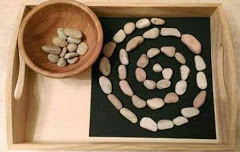The ability of the drawing you expect of skills pre-requisite that children learn with experience. Sometimes, however, they can take over the difficulty specifications attention, of management of the sheet, of fine motor hindering a positive, playful experience of drawing. In this article, we'll tackle the most common challenges that a child may encounter when drawing, by offering games that can be made by both the parents and teachers who want to propose alternative activities.
...if you do not see while drawing?
If the child has difficulty oculo-motor and is hard to keep the attention on the task, stopping frequently to the activity and not bringing it to the end, the advice is to start with the activity up-motor with paths to reproduce or beads, and nails.



- You can use sheets of paper with color and shapes that contrast with the background of the tour
- You can use the lights to illuminate the target path
- You can use macchini, marbles, balls and put in these paths (but also simple pasta to be inserted in a plate of spaghetti!)
- You can use the magnets that move on the path you created
...if he manages evil space on the sheet?



In the presence of difficulty type visuospaziale you can propose exercises imitation with different material, such as buildings, toothpicks, straws.
You do these exercises before with concrete material and then with photos of a model to imitate.
In these cases, are very useful exercises on the sheets, like these that I present to you.
- ask them to find the figures, the same or different among more than 4 figures
- ask them to find the figures arranged in the same way (same orientation) equal or different from each 4 or more figures of the same, but arranged in a different way
- ask which figure is the same as that indicated on a sheet of paper with a designed background and different figures
It can also be essential to teach the child to discriminate the figures that, according to the directions, have the correct characteristics.
- drawn in a sheet of incomplete figures, asking the child to complete the figure shown entirely
- create grids with dots or squares, one for the baby and one for the parent, and completely together
- draw the figures and ask the child to draw them similarly to your
...if you press too much on the sheet?
During the activity of drawing (or writing), the child may press too much on the paper, sometimes leaving just the sign-in sheets under the one on which they are drawing. You may also find that this is too much pressure to create a slight pain in his hand, and the activity is stopped for this reason.
What to do in these cases?

- You can suggest games control tonicsee if you can leave the ball to hit that glass without dropping it!
- You can use different sheets to draw like tissue paper, or crepe paper, so that it serves to modulate the strength to not buccal
- You can use graphical tools that are different, giving priority to those that, if subjected to too much pressure will break as the pencils with the mina estrabile
...if you do not press on the sheet?
If, on the contrary, when the child draws but fails to press sufficiently on the sheet, as if unable to direct the force on the tip of a pencil or felt pen, can be beneficial games which I describe below.

- You can use the pens to the effect that when the tip is pressed on the sheet with a sound or light
- You can suggest games to type up the motor with clothespins or a place in which to train the fingers and hand to make pressure
- You can play a hole in the cardboard to create forms
- You can use different graphical tools, such as crayons, which require the right pressure
The title of this article is deliberately provocative. What does it mean to “not be able to draw”?! The design can be an excellent leisure activity and playful, which does not provide for any evaluation or judgment, especially from children.
In this article, we propose games and activities that allow you to strengthen those skills prerequisites to the practice of drawing, which not all children learn with ease.






